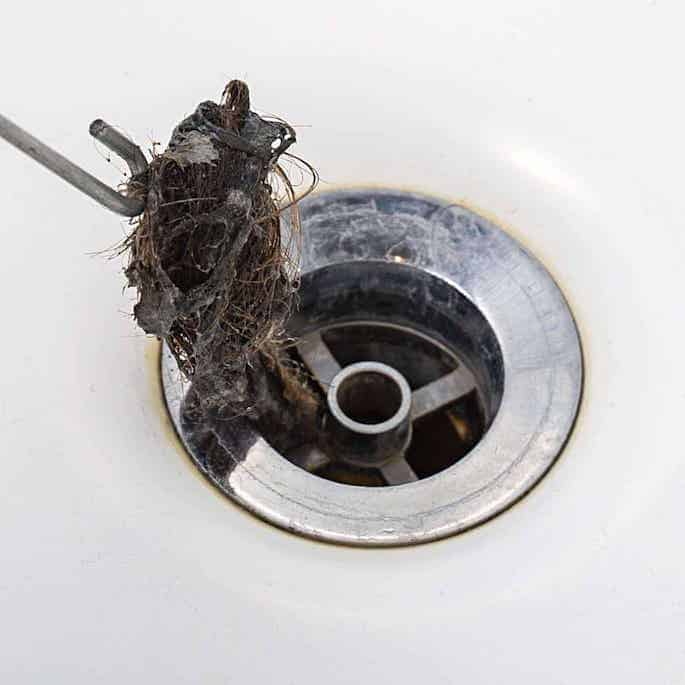Introduction:
Dealing with a bathtub drain clogged with hair is a common woe for many homeowners. The accumulation of hair over time can impede water flow, leading to slow drainage or even complete blockage. Fortunately, tackling this issue doesn’t always require a plumber. In this comprehensive guide, we’ll walk you through the steps to unclog your bathtub drain efficiently, using simple tools and techniques.
I. Gathering Materials and Tools:
Before diving into the unclogging process, it’s essential to gather the necessary materials and tools. You’ll need gloves, a bucket, a plunger, a drain snake, and a screwdriver. These basic tools can be found in most households, making the unclogging process accessible to everyone.
Gloves:
Protect your hands from dirt, grime, and any sharp objects you might encounter during the unclogging process.
Bucket:
Useful for collecting water and debris, preventing a mess in your bathroom.
Plunger:
Creates pressure to dislodge clogs near the surface of the drain.
Drain Snake:
Ideal for reaching deeper clogs that may be challenging for a plunger.
Screwdriver:
Necessary for removing the drain cover, which allows access to the clogged area.
II. Removing the Drain Cover:
Identify the type of drain cover in your bathtub—whether it’s screw-in or pop-up. If it’s held in place with screws, use a screwdriver to remove them. For pop-up covers, lift or unscrew them to reveal the clogged area. Taking this step allows easy access to the source of the problem.
III. Clearing Visible Hair:
Put on your gloves and start by removing any visible hair strands near the surface. Dispose of the hair in a trash bag to prevent it from causing further issues. Thoroughly inspect the drain to ensure that all visible hair has been removed.
IV. Using a Plunger:
Fill the bathtub with enough water to cover the plunger. Place the plunger over the drain, creating a tight seal. Vigorously pump the plunger to dislodge the clog. Repeat the process if necessary, checking for improvement each time. The plunging action creates pressure that helps break up and dislodge the hair clog.
Tips for Effective Plunging:
- Ensure a tight seal:
- A proper seal is crucial for effective plunging.
- Use quick, forceful thrusts:
- Rapid and forceful plunging is more effective than slow and gentle movements.
- Repeat if necessary:
- Persistent clogs may require multiple attempts.
V. Using a Drain Snake:
Feed the drain snake into the drain until you feel resistance. Rotate the snake handle to break up the clog, and slowly withdraw the snake, pulling out any dislodged hair and debris. Run water to check for improved drainage. The drain snake is effective in reaching deeper clogs that may be challenging for a plunger.
Tips for Using a Drain Snake:
- Insert the snake slowly:
- Gradual insertion helps you navigate twists and turns in the pipe.
- Rotate the handle consistently:
- Consistent rotation breaks up the clog more effectively.
- Be patient:
- Deeper clogs may take time to clear completely.
VI. Flushing with Hot Water and Baking Soda/Vinegar:
After physically removing the hair clog, pour a pot of boiling water down the drain to help dissolve any remaining residue. For an extra boost, mix baking soda and vinegar and pour it down the drain. Allow the mixture to sit for 15-20 minutes before flushing the drain with hot water.
VII. Preventive Measures:
To prevent future clogs, consider using drain guards that catch hair before it goes down the drain. Establish regular maintenance routines, such as a monthly cleaning with hot water and a splash of vinegar, to keep the drain clear of hair and debris.
Additional Preventive Tips:
- Brush your hair before showering:
- Minimize the amount of loose hair that goes down the drain.
- Install a hair catcher:
- These devices prevent hair from entering the drain in the first place.
FAQs:
Q1: Can I use chemical drain cleaners?
A: It’s not recommended, as these chemicals can be harsh and may damage your pipes. Stick to the natural methods outlined in this guide.
Q2: What if the clog persists after multiple attempts?
A: If your efforts are unsuccessful, it’s advisable to seek professional help to avoid potential damage to your plumbing system.
Conclusion:
By following these simple steps, you can take control of a clogged bathtub drain filled with hair. Regular maintenance and preventive measures will go a long way in keeping your drains clear and your showers uninterrupted. Remember, a little effort now can save you from bigger plumbing headaches in the future. With the right tools and a bit of know-how, you can keep your bathtub drain running smoothly.

A group of home improvement enthusiasts and bathroom design experts, combines in-depth knowledge and a shared passion to deliver engaging, informative content that guides readers through the world of bathroom innovation and style.

Leave a Reply